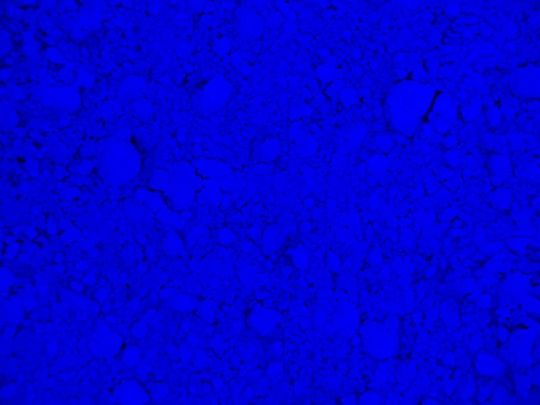#Blue Pigment
Explore tagged Tumblr posts
Text

#blue#cobalt blue#majorelle#yves klein#modern art#art#shapes#abstract art#painting#oil painting#oil pigment#blue pigment#forms#bodies#vessels
5 notes
·
View notes
Text
The Rarest Pigment in the World | Colour the Spectrum of Science | BBC Science
0:57 / 5:1https://www.youtube.com/watch?v=N4lT8OzfQrUThe Rarest Pigment in the World | Colour the Spectrum of Science | BBC Science Screenshot Screenshot 0:57 / 5:18 Screenshot Screenshot The Rarest Pigment in the World | Colour the Spectrum of Science | BBC Science

View On WordPress
0 notes
Text
Ultramarine smells like sulphur
youtube
0 notes
Text

♪ It's time for Fish Fact Friday! ♪
The African coelacanth is a living fossil, and one of only two extant species of coelacanth! African coelacanths have vivid blue scales, which distinguish them from the brown-scaled Indonesian coelacanth.
They often reside in underwater lava caves, spending the day resting in the caves and hunting in their vicinity at night. Unlike most other vertebrates, they have a hinge in the back of their skull which allows them to move both their upper and lower jaw simultaneously - this allows them to open their jaws extra wide to catch prey!
#i love how blue they are!#interestingly their blue color is from a pigment and not structural#which is pretty rare if i remember correctly#coelacanth#fishblr#fish art#fish#my art#marine biology#fish fact friday
2K notes
·
View notes
Text
What Color is Ultramarine Blue?

Ultramarine blue is a vivid and deep blue color. It's often described as a rich and intense shade of blue, resembling the color of the lapis lazuli gemstone. The name "ultramarine" actually comes from the Latin words "ultra" (beyond) and "marinus" (sea), indicating that the pigment was originally derived from a rare and valuable blue mineral sourced from distant lands.
Was ultramarine blue expensive?
Yes, historically, ultramarine blue was one of the most expensive pigments used in art due to the labor-intensive process of extracting and preparing the pigment. The original source of ultramarine blue was the mineral lapis lazuli, which had to be mined primarily in Afghanistan. Extracting the vibrant blue pigment from lapis lazuli required meticulous grinding and purification, which made it a time-consuming and resource-intensive process.
Because of its rarity and the effort involved in its production, ultramarine blue was often reserved for use in the finest artworks and was considered a symbol of wealth and prestige. It was frequently used in religious paintings, particularly in depictions of the Virgin Mary's blue robe.
Over time, alternative synthetic methods for producing ultramarine blue were developed, which brought down the cost and made the pigment more accessible. Despite this, historically, ultramarine blue was indeed an expensive and prized color in the world of art.
Is ultramarine a purple blue?
No, ultramarine blue is not a purple-blue color; it is a true Ultramarine blue color with no significant purple undertones. It is a vivid and deep blue hue, often described as a rich and intense shade of blue, resembling the color of the lapis lazuli gemstone. The name "ultramarine" comes from the Latin words "ultra" (beyond) and "marinus" (sea), referring to the fact that the pigment was originally sourced from a rare blue mineral found beyond the sea.
Purple-blue colors would have more of a blend of blue and purple, leaning towards the purple side of the color spectrum. Ultramarine blue pigment is distinctively blue and does not have a strong presence of purple in its composition.
Visit at :- https://www.ultramarinebluepigments.com/
#Ultramarine Blue Colour#Ultramarine Blue Color#Blue Colour#Pigment Colour#Pigments Colour#Ultramarine Blue#Ultramarine Blue Pigment#Ultramarine Blue Pigments#SKU Pigments#SKU Pigments Limited#blue pigments#best ultramarine blue pigment#blue pigment#ultramarine blue manufacturer#ultramarine blue pigment manufacturer#ultramarine blue manufacturer in india
0 notes
Text
#Benefits of phycocyanin#phycocyanin#phycocyanin spirulina#phycocyanin price#blue pigment#spirulina#blue spirulina#spirulina powder#spirulina tablets#what is phycocyanin#immune system#immune#immunity booster#immune system booster
0 notes
Text


i would like to draw him more i think..
#marvel mcu#xmen#xmen apocalypse#charles xavier#professor x#snap sketches#drawin him and i cant help but feel he looks like matt mercer i elakjleakjveal something i must work on in the future#a LOT to work on really but this was just a quick thing just to get basics and the sort#anyway and if i say his best outfits were in this movie. and ironically best hair#this is very closely followed by his psychedelic shirt and bell bottoms from dofp but ANYWAYS#again just wanted to do a quick doodle .. a quick study i spose#i dont have any major art plans . wait im lying yes i do but not with young charles and erik#ill have to practice those two another time ... for now i hope you may enjoy a humble professor#ps if im so tbh i just wanted to draw him cause i needed to color his eyes and lips#because i am forever mesmerized by how blue his eyes can be and how pigmented his lips can be#wait i have a text post to make. im sick ..
733 notes
·
View notes
Text

Some qilik variation
Qilik are the most phenotypically diverse sophont and have a massive degree of variation in coloration and feathering across and within populations. This is partly due to being composed of at least three ancestral species and multiple subspecies (mostly interfertile and widely hybridized), partly due to their extremely wide range and often isolated populations, and partly due to the significance of color and display features in mate selection (and varying and ever-changing cultural conventions of attractiveness).
(A few here display body modifications, namely clipped brow feathers and selective plucking. The most vivid orange and pink shades require carotenoid pigments derived from the diet)
#qilik#blightseed#The biggest commonality across populations is males gaining blue pigmentation in exposed skin during the breeding season#It's not quite ubiquitous but common enough across isolated populations that it likely derived from a single common ancestor species#Also barring mutation and injury all qilik naturally grow brow distinct brow feathers so people without them Usually have intentionally#plucked or clipped them
757 notes
·
View notes
Text









iuilewatercolors on ig
#stim#stimboard#paint#iridescent#sfw#white#silver#rainbow#pink#blue#green#yellow#black#gray#grey#pigments#paint mixing#watercolors#shiny#palette knife#pouring#hearts#paintbrushes#painting#color shifting#glitter#hands free#ishy gifs#postish
414 notes
·
View notes
Text

The Colors line dancing! They have varying levels of skill lol.
#loz#loz link#four swords#four swords manga#fsa link#shadow link#green link#vio link#blue link#red link#fsa#loz fsa#legend of zelda#the legend of zelda#link#tloz#links meet au#starship art#sl pigment
315 notes
·
View notes
Text

Yves Klein Suaire de Mondo Cane (Mondo Cane Shroud) 1961 Pigment, synthetic resin on gauze 108 x 118.5 in.
700 notes
·
View notes
Text


ADAM in Hell Is Forever ♫ | 1x01 - Overture
#hazbin hotel#adam#hazbin adam#adam firstman#hazbin hotel adam#hazbin hotel edit#hazbin edit#hazbin#screencaps#photo#overture#song: hell is forever#i've always loved this frame. can't believe it took me this long to make this post lmao#oh hey. guess what took me the longest in making this post. was it finding this shot? was it the coloring? deciding how to crop it?#NEITHER. IT WAS TRYING TO FORCE A GOOD BLUE-YELLOW COLOR GRADIENT FOR HIS NAME W/O AN UGLY GREY IN THE CENTER#BEFORE GIVING UP AND USING GREEN. i knewww it wouldn't work because light doesn't mix like pigment but did i try anyway? SURE DID.
125 notes
·
View notes
Text
visual stimming is by far the weirdest kind of stim on the brain. just going about life wanting to glue holographic pokémon cards directly onto my eyeballs every single day forever
#there’s no like. release.#looking at colors isn’t enough i need to inject ultramarine blue pigment straight into my veins#i could eat it i could live in it i could build a home together. with ultramarine#visual stim#stimming#adhd#and others
2K notes
·
View notes
Text

Entoloma hochstetteri by Mary Smiley
#werewere-kōkako#Entoloma hochstetteri#fungi#fungus#upload#new zealand#New Zealand mushrooms#new Zealand fungi#NZ#nature#mycology#gilled mushrooms#mushroom gills#blue pinkgill#blue#blue mushroom#blue mushrooms#azulene#azulene pigment#nature photography#photography#mushroom observer#fungi photography#wild fungi#E. hochstetteri#Saprotrophic#fibrillous#Mary Smiley#ladyflyfish
92 notes
·
View notes
Link
What is ultramarine blue pigment used for
#ultramarine blue pigment#ultramarine blue pigments#Blue Pigments#Ultramarine Pigment#Ultramarine Pigments#Blue Pigment#SKU Pigments#SKU Pigment
0 notes
Text
THE SURPRISING HEALTH BENEFITS OF PHYCOCYANIN
If you are looking for a natural way to improve your health, you may want to consider phycocyanin. Phycocyanin is a blue pigment that is found in spirulina, a type of blue-green algae. This pigment is what gives spirulina its distinctive color.
While spirulina has been a staple food in some cultures for centuries, it has only recently gained popularity in the Western world. This is due, in part, to the many health benefits of phycocyanin.
Phycocyanin has been shown to have antioxidant, anti-inflammatory, and brain-protective properties. It may also help to fight cancer and boost the immune system.
If you are interested in adding phycocyanin to your diet, there are a few different ways to do so. You can take it in supplement form or add spirulina powder to smoothies, juices, or other recipes. Keep reading to learn more about the many health benefits of phycocyanin!
What is Phycocyanin?
Phycocyanin is a natural pigment that is produced by blue-green algae. It gives spirulina, a type of algae, its distinctive blue-green color. The pigment is made up of several different proteins, which can interact with other molecules in the body. Phycocyanin is a powerful antioxidant that can help protect the body from free radical damage and other types of oxidative stress. Additionally, it possesses anti-inflammatory qualities that may aid in lowering inflammation in the body. In addition to its antioxidant and anti-inflammatory effects, phycocyanin may also have other beneficial health effects. It has been shown to boost the immune system, fight cancer, and improve brain health.
The many health benefits of Phycocyanin
The health benefits of phycocyanin are numerous and varied. As an antioxidant, it can help protect against oxidative stress and damage from free radicals. This can help to reduce inflammation in the body, which can help to improve overall health. Phycocyanin is also believed to boost the immune system, as it can help to stimulate the production of protective cells and proteins. This can help the body to better fight off infections and diseases. In addition, phycocyanin may help to fight cancer. Studies have shown that phycocyanin can inhibit the growth and spread of certain types of cancer cells, including those associated with lung, breast, and skin cancer. Lastly, phycocyanin may help to improve brain health. Studies have shown that phycocyanin can help to reduce inflammation in the brain, which can help to improve overall cognitive function. It may also help to protect against the development of Alzheimer’s disease and other age-related cognitive decline.
Phycocyanin as an Antioxidant
Phycocyanin is an effective antioxidant, which means it can help to protect against free radical damage. Free radicals are associated with many different diseases and conditions, including cancer, heart disease, and premature aging. Phycocyanin works by neutralizing free radicals and preventing them from causing oxidative damage to the cells. It can also help to scavenge excess reactive oxygen from the body, further helping to reduce the damage caused by free radicals. The antioxidant effects of phycocyanin can also help to reduce inflammation in the body, as inflammation is caused by oxidative damage and free radical activity.
Phycocyanin and Cancer
Phycocyanin may also have a role to play in the fight against cancer. Studies have shown that it can help to inhibit the growth and spread of certain types of cancer cells, including those associated with lung, breast, and skin cancer. It is believed that phycocyanin works by blocking the signals that cancer cells send out to spread, which helps to prevent the spread of the cancer. Phycocyanin may also help to reduce the side effects of cancer treatment. Studies have shown that it has the potential to reduce nausea and fatigue, as well as improve the overall quality of life for those undergoing cancer treatment.
Phycocyanin and Inflammation
In addition to its antioxidant effects, phycocyanin has been found to have anti-inflammatory properties. It works by blocking the production of certain inflammatory agents, such as cytokines and prostaglandins. This can help to reduce inflammation throughout the body, which can help to improve overall health. Chronic inflammation is associated with a variety of diseases and conditions, including heart disease, diabetes, and cancer. Thus, by reducing inflammation, phycocyanin may be able to help prevent the onset of these diseases.
Phycocyanin and Brain Health
Phycocyanin may also have beneficial effects on the brain. Studies have shown that it can help to reduce inflammation in the brain, which can help to improve cognitive function. It may also help to protect against the development of Alzheimer’s disease and other age-related cognitive decline. In addition, phycocyanin has been shown to increase the production of certain brain chemicals, including dopamine and serotonin. These chemicals are responsible for mood regulation, so an increase in their production can help to improve mood and reduce stress.
How to get Phycocyanin into your diet
If you are looking to add phycocyanin to your diet, there are a few different ways to do so. The most straightforward way is to take it in supplement form. However, if you are looking for a more natural way to get phycocyanin into your diet, you can add spirulina powder to smoothies, juices, or other recipes. A form of blue-green algae called spirulina is high in phycocyanin and other minerals. It can be added to any number of dishes to add a burst of nutritional value. In addition, spirulina is rich in protein, vitamins, and minerals, so it can help to boost overall nutrient intake.
To sum things up
Phycocyanin is a blue pigment that can be found in spirulina, a type of blue-green algae. This pigment possesses a number of health benefits, including antioxidant, anti-inflammatory, and brain-protective properties. It can also help to fight cancer and boost the immune system. If you are looking to add phycocyanin to your diet, there are a few different ways to do so. You can take it in supplement form or add spirulina powder to smoothies, juices, or other recipes. Overall, phycocyanin can be a great way to improve your health and boost your nutrient intake.
#Benefits of phycocyanin#phycocyanin#phycocyanin spirulina#phycocyanin price#blue pigment#spirulina#blue spirulina#spirulina powder#spirulina tablets#what is phycocyanin#immune system#immune#immunity booster#immune system booster
0 notes